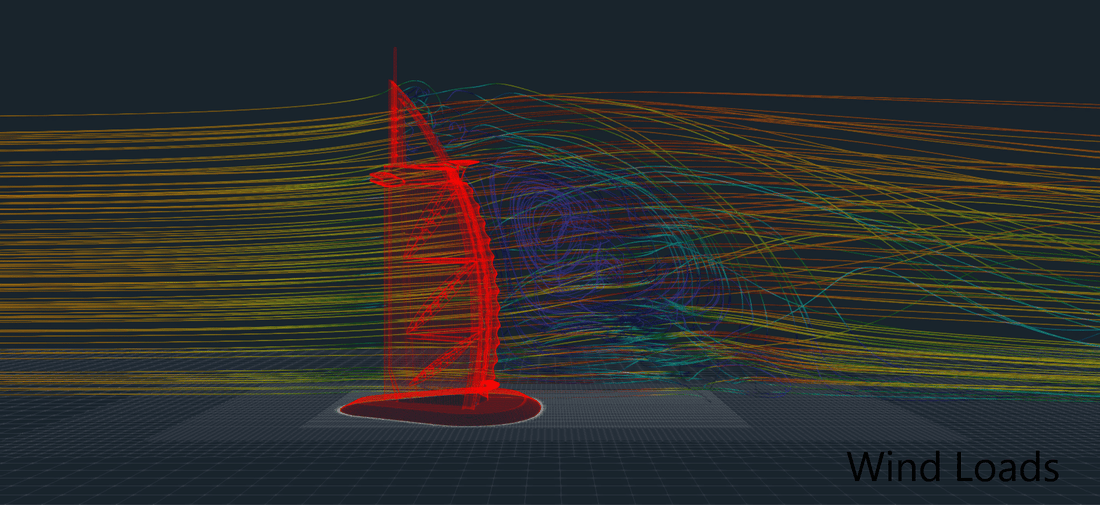Different types of loads act on structures, which must be taken into account in structural planning depending on their applicability. They can be divided into vertical and horizontal loads. Furthermore, they can be divided into static and variable loads.
Loads that are not a function of time can be considered static loads, and loads that change over time can be considered variable loads.
Let's discuss the different types of loads one by one.
dead loads
All structural elements are designed for permanent loads and there are different types of loads, such as: B. Permanent superloads, etc. Furthermore, dead loads are the permanent loads acting on the structure.
The self-weight of the component and the constant loads on the structure are called dead loads.
The weight of structural elements, wall loads, structures fixed to a slab, etc. are considered permanent loads.
BS 6399 Part 1 1996 For information on dead loads see this page.
payloads
Variable loads acting on structural elements are considered dynamic loads.
Minimum loads on floors depending on the use of the structure may be from BS 6399 Part 1 1996.
wind loads
In addition to permanent and moving loads, wind is the most frequently considered type of load acting on structures. As the height of the structure increases, the wind pressure on the structure increases.
The impact of wind on smaller buildings is typically not considered because rated loads become critical at lower wind pressures. However, as the building gets taller, wind pressure becomes critical.
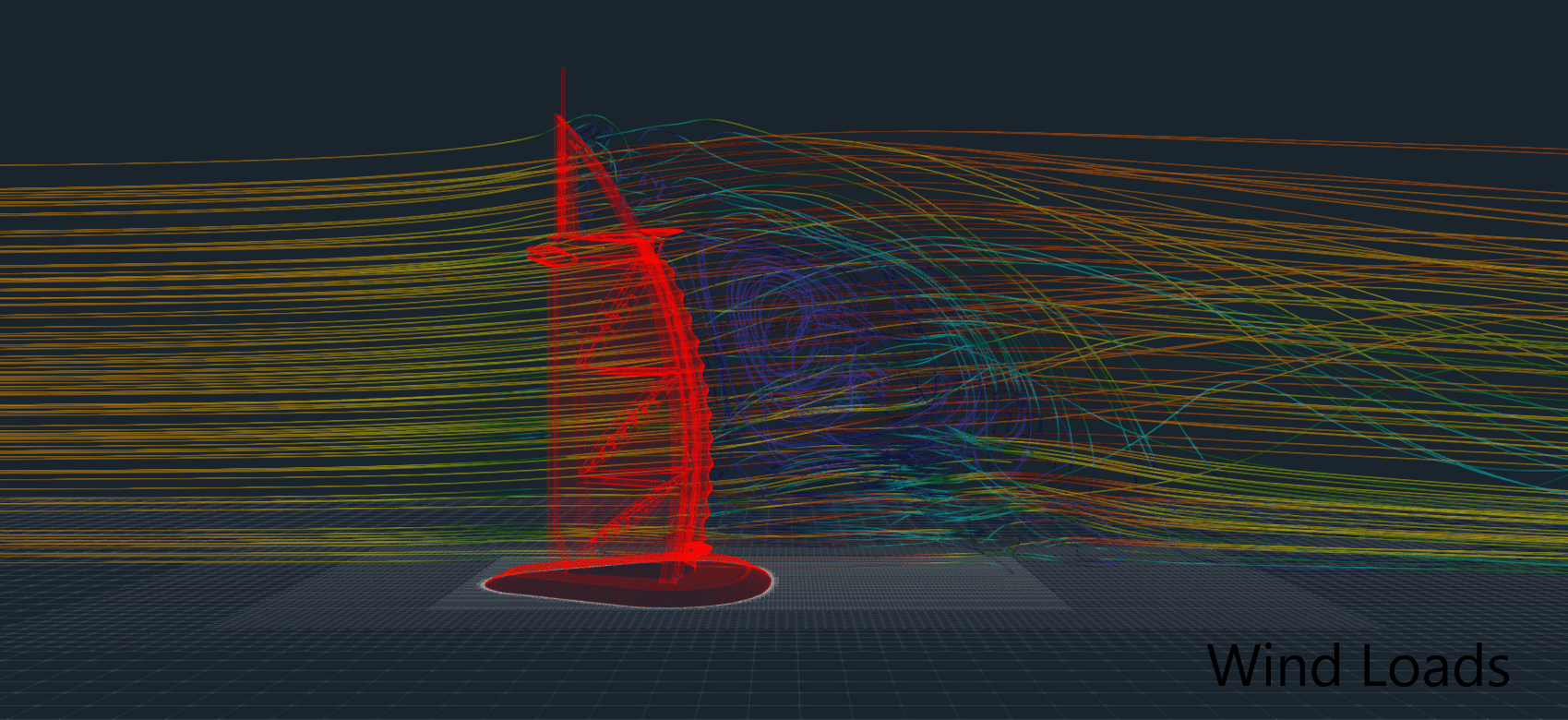
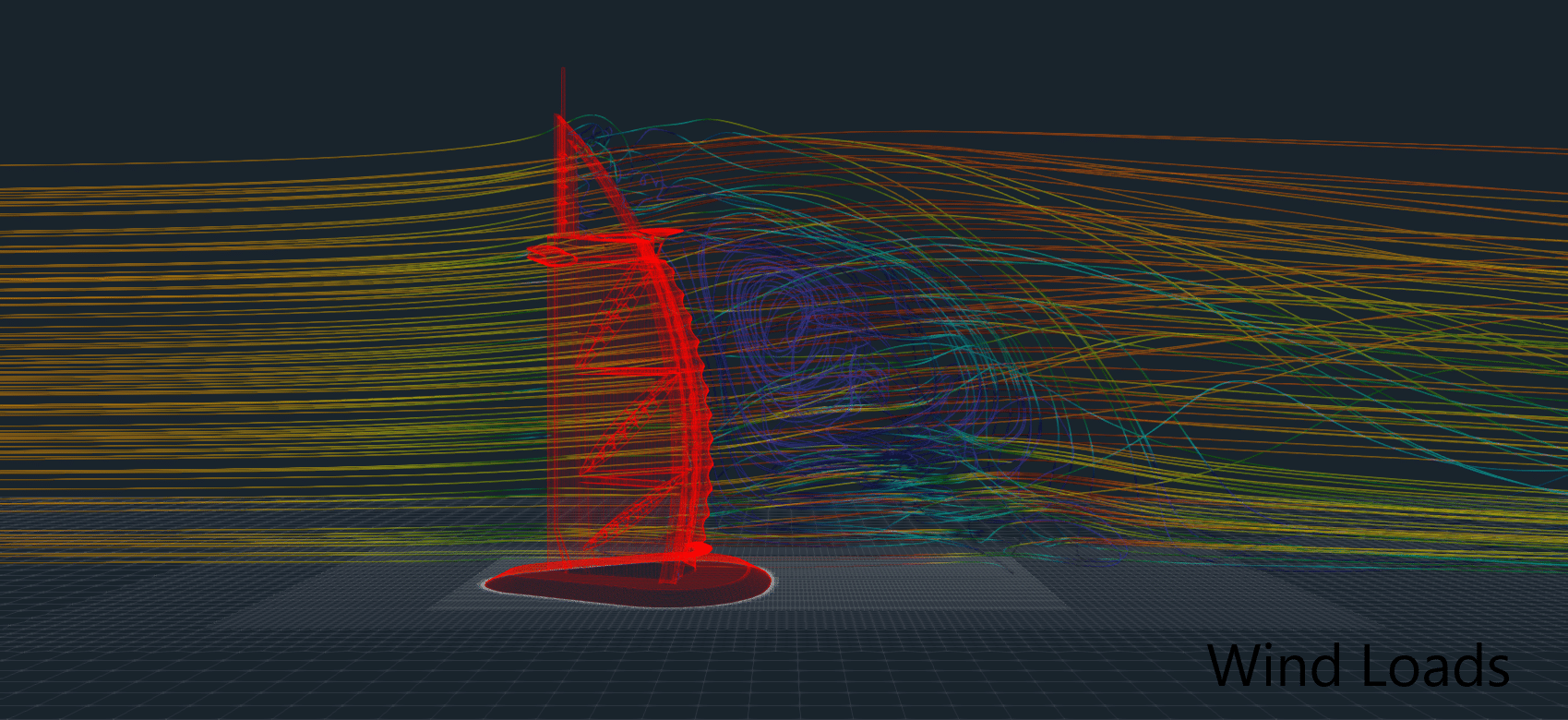
There are different standards for calculating wind pressure on structures. CP3 Chapter V and BS 6399 Part 2 1997 can be used to calculate wind pressure on the structure. Furthermore, Chapter V of CP3 was removed. We can BS 6399 Part 2 1997 .
Different standards are based on different average wind speeds. Therefore, we need to be careful when choosing the base wind speed.
CP 3 Chapter V uses the 3 second gust value and BS 6399 Part 2 uses the hourly average wind speed. Therefore, when selecting the wind speed, the corresponding value must be selected based on the relevant code.
Seismic loads
Plate movements cause earthquakes. There are areas with a higher risk of earthquakes. The greater the distance to the plate boundaries, the smaller the impact of the earthquake.
The impact of seismic loads on a structure is uncommon compared to other types of loads.
Depending on the area prone to earthquakes, ground acceleration is taken into account in the design. Design standards provide planners with acceleration coefficients for vertical acceleration and horizontal acceleration. These values are based on the likely magnitude of the earthquake.
The duration of an earthquake is generally 30 to 40 seconds. There are cases where the duration is much longer.
UBC is one of the most commonly used structural engineering standards for calculating the effects of an earthquake on structures.
Structural analysis and design
There are several methods for calculating lateral loads on structures and for carrying out structural analysis and design.
The simplest method is to calculate seismic forces as static loads and apply them to the structure to determine the forces acting on the building. In this method, the base shear force is calculated based on the considered acceleration coefficients. This force is then transferred to the structure based on the height and mass of each floor. In this method, we assume that the mass of the structure is combined to determine the reactions.
Additionally, the response spectrum method and the time history method are available in most structural analysis programs. After changing the corresponding functions, the analysis can be performed manually.
Explosive charges
Explosive charges are not a type of loading commonly applied to structures. Impact loads applied to a structure over a shorter period of time are the effect of blast loads. Burning explosives releases enormous energy. This energy is converted into thermal and kinematic energy.

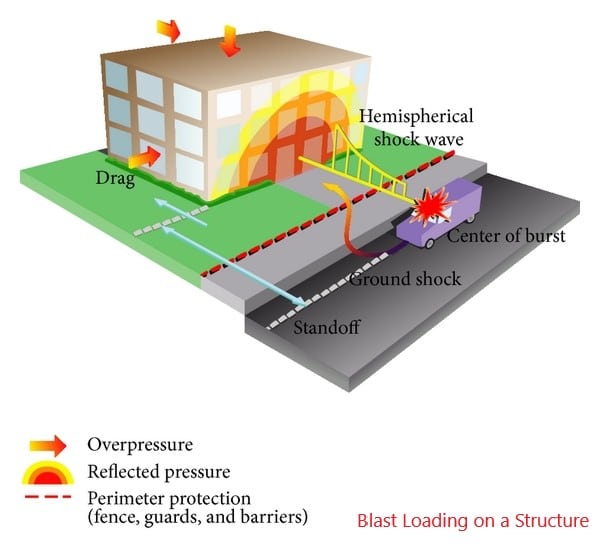
This creates pressure waves that travel through the air and hit the structure, damaging it.
The formation and fluctuation of explosion pressure at a point are shown in the following figure.
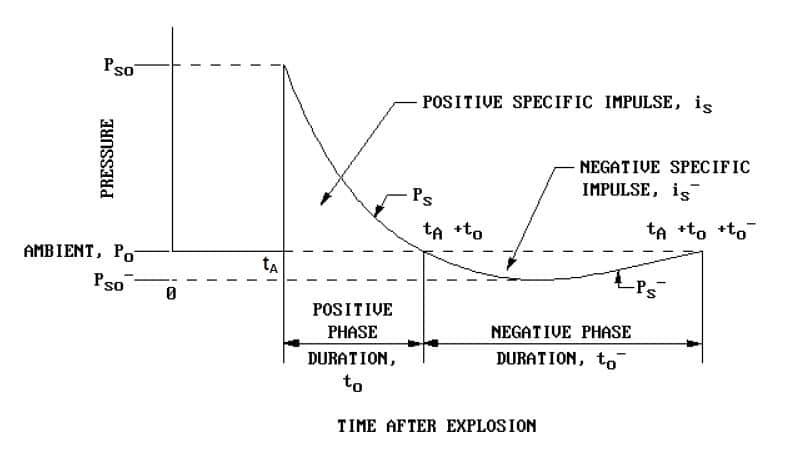
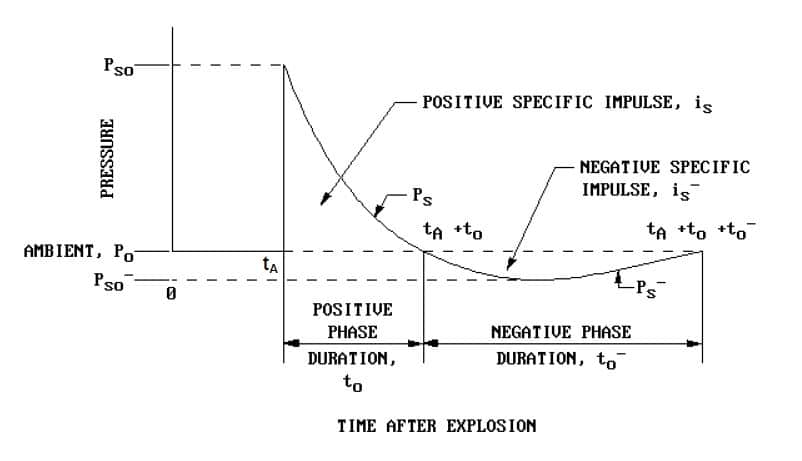
As shown in the figure above, there are positive and negative phases for explosion pressure. Furthermore, when explosions occurred close to the ground, the explosion pressure increased significantly due to reflections from the ground. This wave is called reflected pressure, which is formed by the distance g between the incident wave and the reflected wave.
Additionally, this fusion creates marching poles that generate uniform pressure at one point at a given time.
The intensity of the blast pressure generated during an explosion is a function of the distance from the explosion. The blasting distance depends on the distance (distance between the structure and the blasting location) and the weight of the blasting material.
Z = R/W 1/3
Where Z is the scaled distance (m/kg 1/3 or ft/lb 1/3 )
R is the distance (m or feet)
W is the weight of the blasting material (kg or lb)
The pressure change in the design is simplified because the pressure change shown in the figure above is difficult to use. The relevant parameters can be obtained from UFC 3-340-2 for positive and negative phases.
Facades are built into structures to protect them by cutting off pressure waves entering the building. Failure of the internal vertical load-bearing member can result in failure of the structures. Further and further progressive collapse may occur depending on the causes of damage to critical elements of the structure.
Thermal loads
Fluctuations in the temperature of the external atmosphere affect structures. They increase the temperature of structures and lead to increased internal tensions in structural elements.
Changes in ambient temperature have no significant influence on the concrete structure leading to structural failures. However, it affects the durability of structures. Article Durability Requirements for Reinforced Concrete Design E Factors Affecting Durability of Concrete Discuss this topic in detail.
Motion joints are erected when the length of the structure is too long to reduce internal stresses. An increase in internal stresses could lead to structural cracks .
Thermal loads can have significant effects on steel structures. Steel is sensitive to increases in temperature. However, the steel structural element cannot fail due to changes in ambient temperature. Bolts or connections can be designed taking these factors into account.
Settlement Charges
Structural settlements will place additional loads on structures during construction planning. Variations in soil conditions can lead to differential settlement, which causes additional stresses on structural elements.
For example, consider building a slab foundation on a subgrade where part of the foundation rests on rock and another part rests on soil. If there is no movement joint when ground conditions change, different settlements will be inevitable.
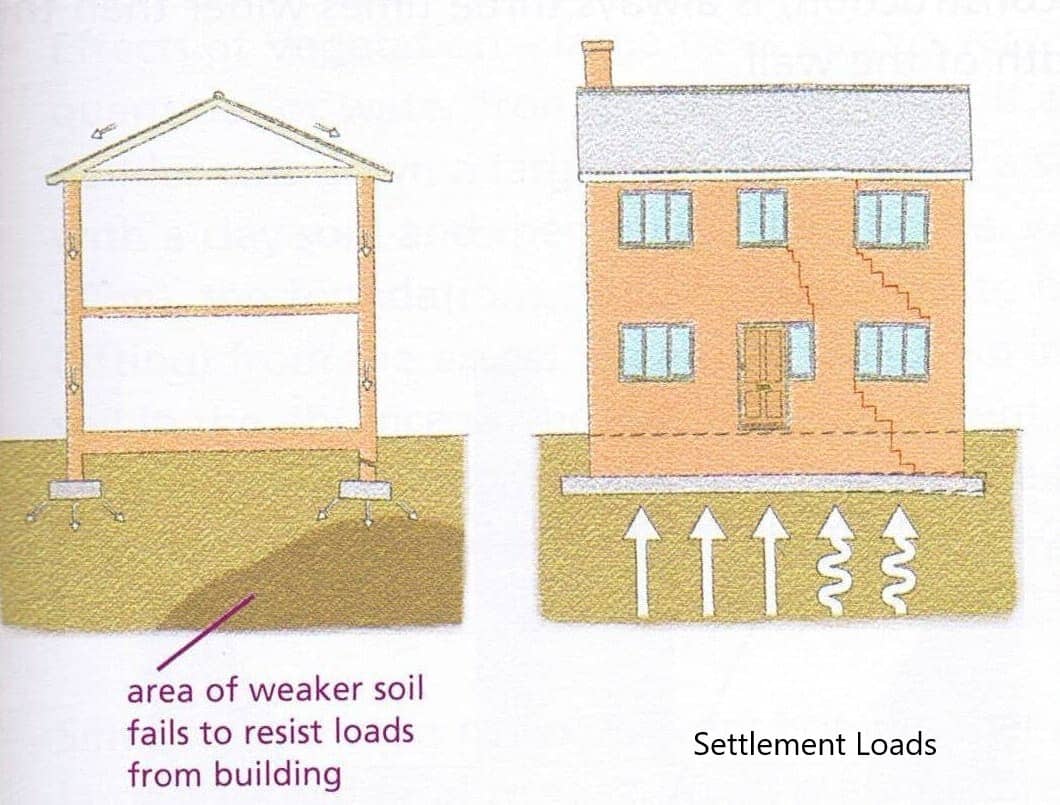
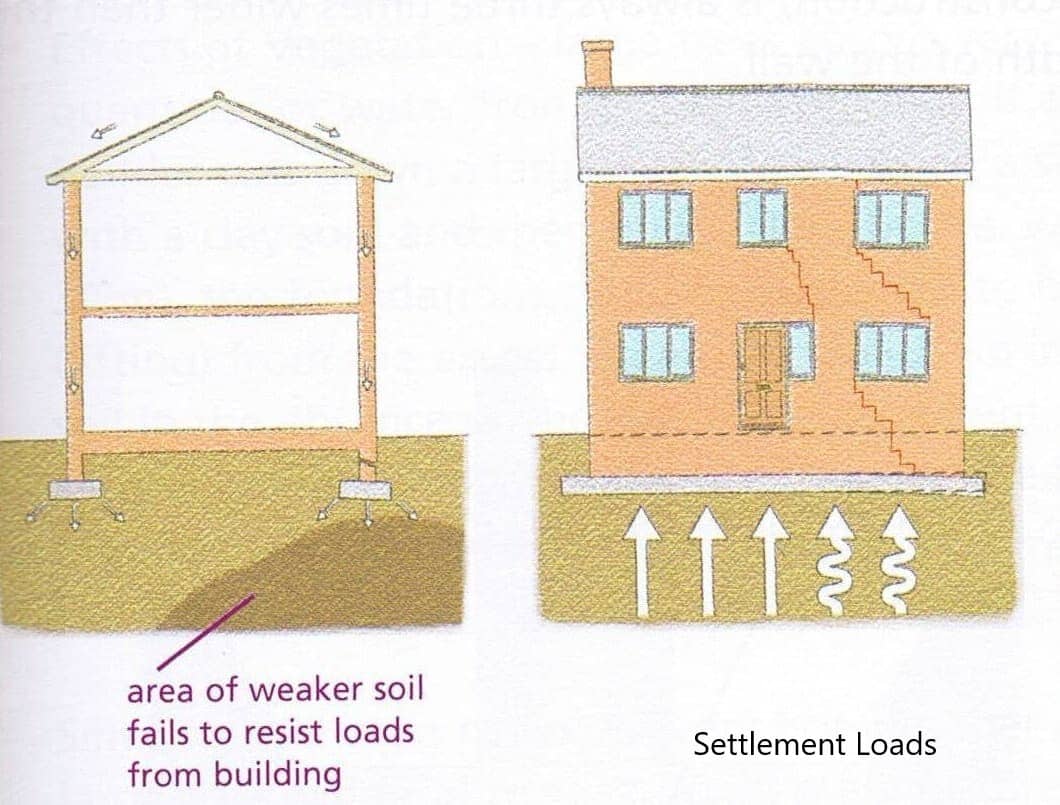
The part of the foundation built on the ground may settle, and the part of the foundation built on the rock will not come down. This information should be carefully considered during construction planning in consultation with the geotechnical engineer. When planning the foundation, the… Underground reaction could be considered in structural modeling to represent different soil stiffnesses. The relevant stiffness must be used in the structural model to represent actual conditions on site.
Typically, the foundation and superstructure are modeled separately in structural analysis. However, when designing a structure of this type, the floor, superstructure and foundation must be modeled together to obtain the actual effects on structural elements other than the foundations. Furthermore, considering soil-structure interaction is a good option, as discussed previously.

